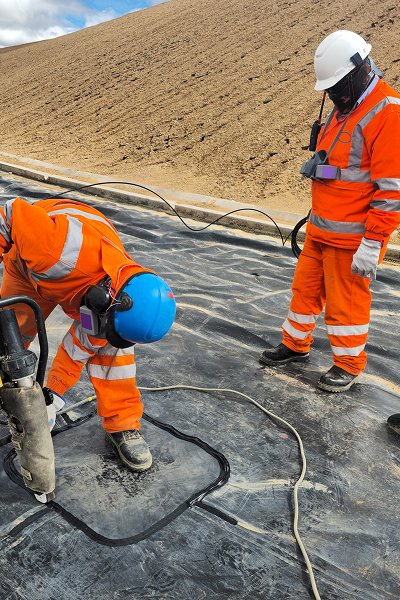What is a Geotube ?
Geotube is a large-scale dewatering and consolidation device used in projects such as sludge dewatering, river dredging, seawall reinforcement, and mudflat reclamation. It is essentially a tubular or bag-shaped container made of high-strength geotextiles. It removes water from the mud through gravity and filtration, thereby achieving mud-water separation and sludge volume reduction.


Geotubes are closed water filtration bags made of high-strength woven geotextiles (such as PP or PET). They can be used to inject materials with high water content, such as mud, sludge, tailings, etc., and discharge water through the micropores of the bag while retaining solid matter to achieve the purpose of dehydration and consolidation.
A complete Geotube (geotextile tube) system typically includes the following components:
| Component | Description |
|---|---|
| Tube Body | The main container made of high-strength woven geotextile, used to hold and dewater slurry. |
| Inlet Port | The filling point where sludge, slurry, or dredged material is pumped into the tube. |
| Air Vent Port | Allows gases to escape during filling and dewatering, preventing overpressure or rupture. |
| Geotextile Material | Woven polypropylene (PP) or polyester (PET) fabric that provides filtration, strength, and chemical resistance. |
| Base Liner System (optional) | A protective layer (e.g., HDPE geomembrane) placed under the tube to prevent groundwater contamination. |
Working Principle of Geotextile Tube Bags:
Filling Phase: Sludge with a high moisture content is pumped into the tube bag.
Flocculation: A high-molecular-weight flocculant is added beforehand or simultaneously to rapidly separate the sludge and water.
Gravity Dehydration: Water is filtered out through the micropores of the tube bag, leaving the sludge residue in the bag.
Solidification and Drying: Residual moisture evaporates or percolates, leaving dry sludge cakes.
Applications of Geotubes
Dredged sediments from rivers, lakes, and reservoirs, municipal sludge (from sewage treatment plants)
Industrial sludge, including pulp and paper sludge, textile and dyeing wastewater sludge, electroplating sludge, metallurgical sludge, port dredged material, mine tailings (from mineral processing), agricultural waste and livestock sludge, construction slurries such as those from tunneling and piling projects, high-water content industrial waste, and post-disaster sludge from flood or mudslide cleanup


Usage Precautions and FAQs
1. Will the geotubes rupture?
No, they won't if handled correctly.
The material is strong and has high pressure resistance.
The filling pressure must be within the recommended range.
2. Is secondary treatment required after filtration?
The filtrate can be discharged after sedimentation or biochemical treatment.
If it contains heavy metals or organic pollutants, it must be treated to meet standards.
3. How should the geotubes be disposed of after use?
The bags can be cut open on-site, and the solid residue removed and recycled.
They can be used for embankment backfill or base fill.
4. Are the geotubes reusable?
If they are uncut and undamaged, they can be used for multiple dewatering cycles.
Reusable sludge from the same site or for the same type is recommended.
5. How should the appropriate geotube specifications be selected?
The sludge volume, moisture content, and processing time requirements are considered.
Customized solutions can be provided to the supplier.


